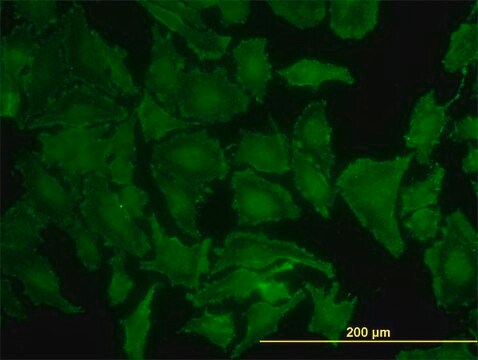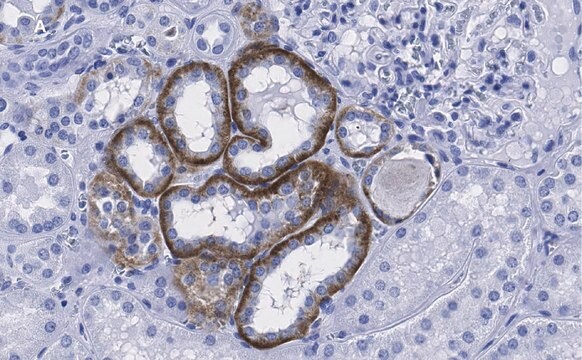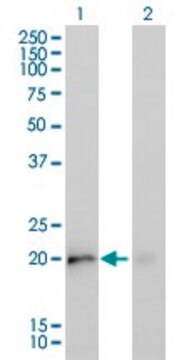ABC1442
Anti-K-Ras4A Antibody, Isoform-specific
from rabbit, purified by affinity chromatography
Sinónimos:
GTPase KRas, isoform 2A, c-K-ras, isoform 2A, K-Ras4A, c-Ki-ras, isoform 2A, K-Ras 2, isoform 2A, Ki-Ras, isoform 2A
About This Item
Productos recomendados
origen biológico
rabbit
Nivel de calidad
forma del anticuerpo
affinity isolated antibody
tipo de anticuerpo
primary antibodies
clon
polyclonal
purificado por
affinity chromatography
reactividad de especies
human
técnicas
western blot: suitable
Nº de acceso NCBI
Nº de acceso UniProt
Condiciones de envío
ambient
modificación del objetivo postraduccional
unmodified
Información sobre el gen
human ... KRAS(3845)
Descripción general
Especificidad
Inmunógeno
Aplicación
Apoptosis & Cancer
Western Blotting Analysis: A representative lot detected the presence of K-Ras4A in total Ras immunoprecipitates from colorectal carcinoma (HCT116, HT29, and CaCo-2) and T24 urothelial carcinoma cell lysates using a pan-Ras mAb (Cat. No. OP40), clone RAS 10 (Tsai, F.D., et al. (2015). Proc. Natl. Acad. Sci. U. S. A. 112(3):779-784).
Calidad
Western Blotting Analysis: A 1:5,000 dilution of this antibody detected exogenously expressed K-Ras4A GFP fusion protein in 20 µg of lysate from transfected HEK293 cells.
Descripción de destino
Forma física
Almacenamiento y estabilidad
Otras notas
Cláusula de descargo de responsabilidad
¿No encuentra el producto adecuado?
Pruebe nuestro Herramienta de selección de productos.
Opcional
Código de clase de almacenamiento
12 - Non Combustible Liquids
Clase de riesgo para el agua (WGK)
WGK 1
Punto de inflamabilidad (°F)
Not applicable
Punto de inflamabilidad (°C)
Not applicable
Certificados de análisis (COA)
Busque Certificados de análisis (COA) introduciendo el número de lote del producto. Los números de lote se encuentran en la etiqueta del producto después de las palabras «Lot» o «Batch»
¿Ya tiene este producto?
Encuentre la documentación para los productos que ha comprado recientemente en la Biblioteca de documentos.
Nuestro equipo de científicos tiene experiencia en todas las áreas de investigación: Ciencias de la vida, Ciencia de los materiales, Síntesis química, Cromatografía, Analítica y muchas otras.
Póngase en contacto con el Servicio técnico








